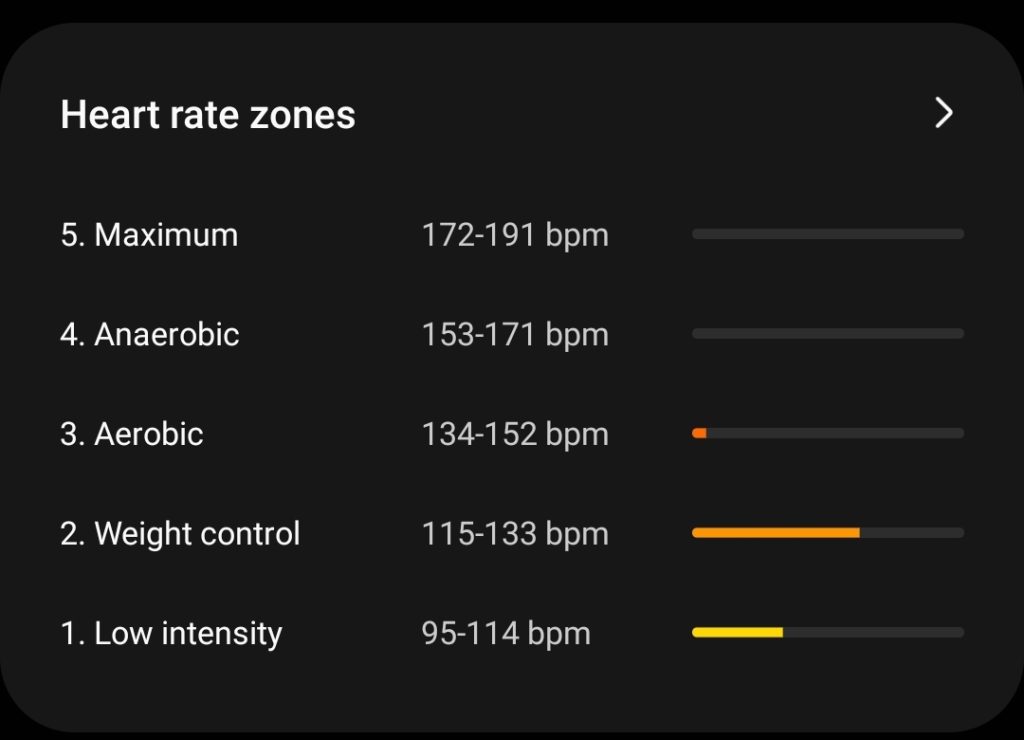In this guide, I want to break down what Zone 2 rucking is all about. We’ll take a peek at the science behind it, see why some folks like it, and how you can give it a try if you’re curious. Whether you’re into workouts, love going on walks, or just want to learn something new, Zone 2 rucking might be something you find interesting.
So, let’s dive in and explore what Zone 2 rucking is – how it can make your heart happy and give you some extra energy by burning fat.

Table of Contents:
1. Understanding Zone 2 Training For Rucking
2. The Science Behind Zone 2 Training Through Rucking
3. Benefits of Zone 2 Rucking: Why Do People Ruck on a Zone 2 Heart Rate
4. How to Ruck in Zone 2: Step-by-Step
5. Frequently Asked Questions
Understanding Zone 2 Training For Rucking
What is Zone 2 rucking? It’s when you ruck while ensuring that your heart rate remains within the designated aerobic Zone 2 heart rate range, typically spanning 60-70% of your maximum heart rate.
This heart rate zone denotes a moderate level of intensity that can be sustained over extended durations.
Zone 2 training through rucking entails participating in a cardiovascular workout while shouldering a weighted backpack, known as a “ruck,” at an intensity that aligns with a specific heart rate range.
This training approach merges the advantages of rucking, a low-impact endurance activity, with the principles of heart rate-based training, resulting in enhanced aerobic fitness and overall endurance.
Key Aspects of Zone 2 Rucking:
- Rucking: Rucking involves you walking while bearing a weighted backpack, often referred to as a “ruck.” The weight of the ruck can fluctuate based on your fitness level and specific goals, encompassing items like water bottles, sandbags, or weights (Here’s a complete list of what to put in a rucksack for weight if you don’t have access to ruck plates)
- Heart Rate Zone: Zone 2 corresponds to a heart rate interval determined as a percentage of your maximum heart rate. This zone is characterized by a moderate level of exertion, allowing you to comfortably engage in conversation while rucking.
- Maintainable Pace: Zone 2 rucking necessitates adhering to a pace that sustains your heart rate within the confines of the Zone 2 range. This approach ensures predominant utilization of the aerobic energy system and promotes the burning of fat for energy.
The Science Behind Zone 2 Training Through Rucking

Aerobic Energy System
When you exercise, your body needs energy to keep moving. The aerobic energy system is like a super-efficient engine that uses oxygen to turn the food you eat into energy your muscles can use.
Zone 2 training through rucking happens at a pace that’s not too fast and not too slow. This means your muscles can get a steady supply of oxygen, which is really important for making energy.
Fat Metabolism
Fat is one of the sources your body uses for energy. During Zone 2 rucking, because you’re not going too hard, your body relies more on fat to provide the energy your muscles need. It’s like using fat as a special fuel.
Your body takes the fat stored in your body and turns it into energy. This is pretty cool because it can help you burn extra fat and manage your weight.
Benefits of Zone 2 Rucking: Why Do People Ruck on a Zone 2 Heart Rate
1. Improved Endurance
Zone 2 training through rucking helps your body become more efficient at using oxygen and energy over a longer period.
This means you can walk, hike, or ruck for extended durations without feeling exhausted. It’s like having a superpower that lets you go the distance.
2. Efficient Fat Burning
Rucking in Zone 2 encourages your body to tap into its fat stores for energy. This not only supports weight management but also helps you burn off extra fat, making your body leaner and more toned.
Learn more about rucking for fat loss.
3. Enhanced Hear Health
When you ruck in Zone 2, your heart pumps blood more effectively, strengthening your heart muscle. This cardiovascular exercise keeps your heart healthy, lowers the risk of heart-related issues, and improves your overall circulation.
Learn more about the top Benefits of Rucking.
4. Low Impact
Unlike high-impact activities like running, rucking in Zone 2 is gentler on your joints. This means you can get a great workout without putting excessive stress on your knees, ankles, and hips.
5. Recovery and Active Rest
Zone 2 rucking is an excellent option for active recovery.
It promotes blood flow, which helps muscles recover faster after more intense workouts. It’s like giving your muscles a gentle massage to keep them happy and ready for the next challenge.
6. Consistency
Because Zone 2 rucking is less intense, you can do it more frequently.
This consistency is key to improving your fitness level and maintaining your health over the long term. It’s like building a strong foundation for a sturdy house.
7. Mental Clarity
Zone 2 rucking has a calming effect on your mind. The rhythmic movement and fresh air can reduce stress, clear your thoughts, and boost your mood. It’s like a peaceful stroll that rejuvenates your mind and spirit.
8. Preparation for Higher Intensity Workouts
Think of Zone 2 rucking as a warm-up for more intense workouts.
It readies your body by gradually increasing its capacity for endurance, setting the stage for more challenging exercises in the future.
Personal Experience: I came from a rucking background and found myself enrolling in CrossFit workouts later on. While I did struggle in the beginning, I quickly adapted to the rough CrossFit Workouts thanks to my previous Zone 2 training by rucking. My rucking background helped me adapt quicker to the higher intensity CrossFit workouts.
Learn more about my rucking body transformation.
How to Ruck in Zone 2: Step-by-Step
Performing Zone 2 training through rucking involves maintaining a steady and sustainable pace while carrying a weighted backpack (ruck) to keep your heart rate within the designated Zone 2 range.
Here’s a step-by-step guide to help you effectively perform Zone 2 training through rucking:
Step 1: Determine Your Zone 2 Heart Rate Range
Calculate your Zone 2 heart rate range based on your maximum heart rate (usually estimated as 220 minus your age) and the Zone 2 intensity range (typically 60-70% of your maximum heart rate).
Example: I am 30 Years old, I therefore subtract 220 by 30. This means that my maximum heart rate is 190. This means that my zone 2 heart rate is 114 – 133.
Alternatively, you can add your age in the calculator below, and get a range of your Zone 2 heart rate. Use a smartwatch during your rucks and make sure you’re sticking to this range.
Step 2: Prepare Your Ruck
Load your backpack with a comfortable amount of weight. Beginners might start with 10-20 pounds, and you can adjust the weight as you progress. Make sure the weight is evenly distributed to prevent discomfort or strain.
Check out my full post on rucking for beginners if you’re in this camp!
Step 3: Warm Up
Begin with a light warm-up, such as 5-10 minutes of brisk walking, to prepare your muscles for the upcoming rucking session.
Step 4: Start Rucking
Begin your rucking session at a comfortable pace, aiming to keep your heart rate within the Zone 2 range. You should be able to maintain a conversation without feeling breathless.
Step 5: Monitor Heart Rate
Use a heart rate monitor or wearable device to track your heart rate throughout the rucking session. Alternatively, you can periodically check your pulse manually (e.g., at your wrist or neck) to ensure you’re staying within the Zone 2 range.
Personally, I use my Samsung Smart Watch to track my heart rate zone.

The image above is an example of one my ruck workouts where I was focused on maintaining a Zone 2 heart rate through my ruck.
Step 6: Maintain a Sustainable Pace
Focus on maintaining a steady pace that keeps your heart rate within Zone 2. Avoid going too fast, as that could push you into higher heart rate zones.
Step 7: Adjust Your Pace
If your heart rate starts to creep above the upper limit of your Zone 2 range, slow down your pace slightly. Likewise, if your heart rate is too low, you can increase your pace to stay within the target range.
Step 8: Duration and Frequency
Aim for a rucking session that lasts around 30-60 minutes initially. As you become more comfortable, gradually increase the duration. Perform Zone 2 rucking sessions 2-3 times per week, depending on your fitness level and goals.
Step 9: Cool Down and Stretch
Finish your rucking session with a cool-down period, walking at a relaxed pace for a few minutes. Follow up with gentle stretches to help maintain flexibility and prevent muscle tightness.
Frequently Asked Questions
Is rucking good for zone 2 training?
Rucking is a fantastic fit for Zone 2 training. Its steady pace aligns well with Zone 2’s moderate intensity. By engaging the aerobic system and encouraging fat metabolism, rucking effectively complements the goals of Zone 2. Moreover, its low-impact nature and adaptability make it a versatile option for sustained workouts within this heart rate zone.
Are there any recommended strategies for tracking heart rate during Zone 2 rucking, especially for those without wearable devices?
Tracking heart rate during Zone 2 rucking is important even if you don’t have wearable devices.
Here are some strategies you can use:
- Manual Pulse Check: Periodically pause during your rucking session to check your pulse manually. Use your fingertips to locate your pulse on your wrist (radial artery) or neck (carotid artery). Count the beats for 15 seconds and multiply by four to get your heart rate in beats per minute.
- Pacing with Music: Choose music with a beat that matches your desired heart rate range. You can find playlists or apps that offer music specifically designed for various workout intensities, including Zone 2.
- Talk Test: Zone 2 corresponds to a level of exertion where you can comfortably hold a conversation. If you can speak without gasping for breath, you’re likely within the Zone 2 range.
- Perceived Effort Scale: Use a perceived exertion scale (e.g., Borg RPE Scale) to gauge your effort level. Zone 2 corresponds to a rating of around 5-6 on a scale of 1 to 10, where 1 is very light and 10 is maximum effort.
- Mobile Apps: Download a heart rate monitoring app on your smartphone. Some apps use the phone’s camera to measure your heart rate by analyzing changes in skin color. While not as accurate as a chest strap, it can provide a general estimate.
- Chatter Test: If you’re rucking with a friend, use the chatter test. If you can comfortably chat while rucking, you’re likely in Zone 2.
- Breathing Pattern: Pay attention to your breathing. In Zone 2, your breath should be rhythmic and controlled, allowing you to maintain a conversation.
While wearable devices provide precise heart rate data, these strategies offer alternatives for tracking your heart rate during Zone 2 rucking without them. Remember, consistency and practice will help you become better at estimating your heart rate range over time.
